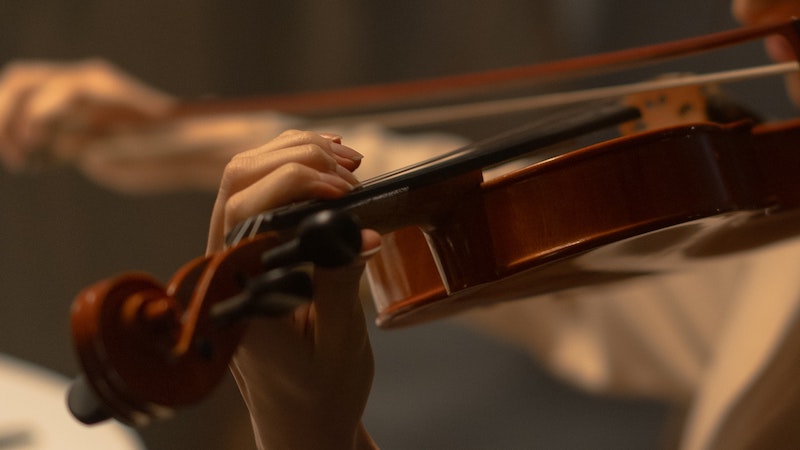By Paul Stein: Your practice room is like a science lab, only filled with music - and hopefully good lighting and a good, solid stand. This room's importance cannot be exaggerated - its the place where discoveries are made and music builds bit by bit. Whether its about a change to a very small detail or the birth of a sudden self-discovery, moments of clarity never come without some kind of experimentation.
![violin hand]() Something as simple as picking out a wrong note may not be simple at all. Your playing is the sum of its parts, and upsetting the apple cart will make the parts slightly shaky. How do you manage the balancing act of keeping your overall playing intact while taking apart one thing at a time?
If you work productively, little details get solved one at a time, and then you gently work them into the big picture. A good place to start is by using your ear to tell you what to work on. As we listen, we may pick up a note thats out of tune, or rhythms that arent evenly spaced. The ear learns to not only notice small imperfections that can be corrected, but also accept and appreciate the passages that are going well.
Something as simple as picking out a wrong note may not be simple at all. Your playing is the sum of its parts, and upsetting the apple cart will make the parts slightly shaky. How do you manage the balancing act of keeping your overall playing intact while taking apart one thing at a time?
If you work productively, little details get solved one at a time, and then you gently work them into the big picture. A good place to start is by using your ear to tell you what to work on. As we listen, we may pick up a note thats out of tune, or rhythms that arent evenly spaced. The ear learns to not only notice small imperfections that can be corrected, but also accept and appreciate the passages that are going well.
Mistakes have a way of avoiding correction, however. Its not so easy to fix old habits because theyre encased in muscle memory. In a split-second an old habit will come rushing back. So the will power you summon up to isolate imperfections is an integral part of the practice mindset.
Of course, that sounds simple. But most of us have a tendency to stop listening and keep barreling ahead. The antidote to that is preparation: thinking and hearing before the bow even touches the string.
Thoughtful Preparation
When several wrong notes pop up in one measure, on can correct the problem in a relatively short period by playing smaller sections and thinking of every note. Unfortunately, nothing moves faster than a finger with no thought behind it. Lacking a plan, it comes up with one of its own. Lets say youre playing a fast run and you incorrectly land on third finger instead of open string. Whatever the reason you landed on the third finger, it repeats itself over and over because of the miracle of muscle memory, which remembers everything, both the good and the bad. So, you have to dig yourself out of it.
Music and Science The Art of Observing Change
When youre getting ready to rid yourself of a wrong note or dynamic that youve repeated many times, you have to prepare for it just as you would for a science experiment. That is, keep everything the same, but change one variable. Remind yourself to be patient, be ready for a slower pace of thinking, and follow these steps:

- Narrow your focus on the mistake only. The mind is so active with conscious and unconscious thoughts, it may resist a change in its routine. So as you repeat the passage, remind yourself about the mistake over and over in order to keep the thought from drifting.
- Get into a slower, more methodical state of mind. Managing how you think and change focus helps you switch back and forth between technical and musical details. Be aware that there are three different speeds that co-exist: the left hand, the bow arm, and the actual speed of the piece. Even the skill of anticipating whats coming up brings in an additional tempo. To quiet the mind, observe and appreciate how all these speeds interact. This puts your playing on more solid ground, so when a change is introduced, its a smoother transition.